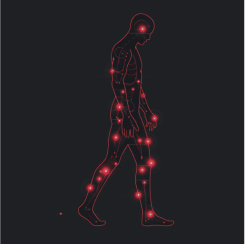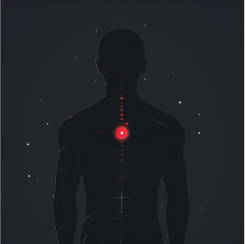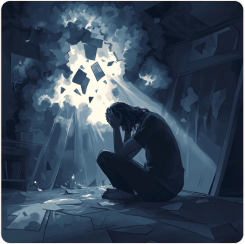Take the Tension Myositis Syndrome Test: Start Your Journey to Relief
Take our 3-minute, neuroscience-based test to see if your brain’s pain pathways are amplifying your symptoms.
At Painapp.health, we understand what it’s like to live with chronic pain—and how frustrating it can be to search for answers. That’s why we’re dedicated to providing solutions that combine compassion with cutting-edge neuroscience.
Here’s why thousands trust us:
- Expertly Designed with a Human Touch: Our TMS test is based on the latest research in neuroscience and mind-body medicine, built to address the real root causes of chronic pain. It’s not just science—it’s personalized, practical, and compassionate.
- Inspired by Proven Methods: Drawing on techniques from leaders like Alan Gordon, our approach focuses on understanding your pain and teaching your brain to let go of it. We don’t just address symptoms; we tackle the patterns behind them.
- Affordable and Accessible: While pain coaching can cost hundreds of dollars per session, Painapp.health offers you continuous guidance and tools for a fraction of the cost—putting expert care within everyone’s reach.
- A Partner in Your Healing Journey: With our app, it’s like having a real pain coach in your pocket. You’ll gain access to neuroscience-based resources, guided self-assessments, and techniques that make healing manageable, step-by-step.
Our TMS test is more than a tool—it’s the first step toward reclaiming your life. Designed by experts who deeply understand the mind-body connection, it empowers you to retrain your brain, reduce pain, and embrace a brighter, pain-free future.
On This Page
- The Neuroscience of Tension Myositis Syndrome
- How Does TMS Cause Pain?
- How the TMS Test Works
- Common Symptoms of TMS
- TMS Treatment Options
- FAQs
- Take the TMS Test
The Neuroscience of Tension Myositis Syndrome
Neuroscience has revolutionized our understanding of pain, showing that the brain is deeply involved in producing physical sensations. In conditions like phantom limb syndrome, amputees continue to experience real pain in limbs that no longer exist, revealing the brain’s powerful role in pain generation. Tension Myositis Syndrome (TMS) works similarly—your brain may create chronic pain as a response to emotional stress, often as a protective mechanism.
How Does TMS Cause Pain?
Tension Myositis Syndrome (TMS) pain originates from neural circuits in the brain rather than physical damage. Over time, your brain may become conditioned to send pain signals, even when no injury exists. This happens because the brain misinterprets certain harmless sensations as threats, triggering a cycle of chronic pain.
The pain is real and can manifest in the back, neck, joints, and other areas of the body. However, it is not caused by structural issues, but by the brain’s neural pathways that have been trained to keep pain signals active. Retraining your brain to reinterpret these signals can stop the pain cycle and lead to lasting relief.
How Does TMS Cause Pain?
Tension Myositis Syndrome (TMS) pain originates from neural circuits in the brain rather than physical damage. Over time, your brain may become conditioned to send pain signals, even when no injury exists. This happens because the brain misinterprets certain harmless sensations as threats, triggering a cycle of chronic pain.
The pain is real and can manifest in the back, neck, joints, and other areas of the body. However, it is not caused by structural issues, but by the brain’s neural pathways that have been trained to keep pain signals active. Retraining your brain to reinterpret these signals can stop the pain cycle and lead to lasting relief.
How the TMS Test Works
Taking our TMS Test online is easy, fast, and free. Here’s how it works:
Step 1: Click on the test link and answer a series of simple, science-backed questions about your pain, emotions, and stress.
Step 2: Our algorithm will analyze your responses to determine if your pain may be linked to TMS.
Step 3: You’ll receive a personalized assessment, along with tips on managing your pain using neuroscience-based techniques.
How the TMS Test Works
Tension Myositis Syndrome (TMS) often manifests as chronic pain that persists even after any physical injury has healed or without any identifiable structural cause. These pain signals are generated by neural circuits in the brain that are stuck in a loop, sending the message of pain long after it’s no longer necessary.
If you experience any of the following symptoms, your brain’s neural pathways might be reinforcing the pain cycle:
- Unexplained Joint Pain: If no structural cause has been identified, this pain may be generated by neural circuits in the brain.
- Frequent Headaches or Migraines: Your brain may be overstimulating pain pathways, even in the absence of physical injury.
- Neck and Shoulder Pain: Persistent pain in these areas could be your brain’s way of responding to stress or emotional tension.
- Muscle Tension and Stiffness: Chronic tension is often maintained by the brain’s misfiring pain signals.
Understanding these symptoms as a product of neural circuits, rather than structural damage, is the first step toward recovery. By retraining your brain and breaking the pain cycle, you can move toward lasting relief.
TMS Treatment Options
Once you’ve identified that TMS could be contributing to your pain, there are scientifically-proven treatment options that target the brain’s role in perpetuating chronic pain. These methods aim to rewire your brain’s neural pathways and provide long-term relief:
- Pain Reprocessing Therapy (PRT): A groundbreaking method that teaches your brain to reinterpret pain signals as non-threatening. By changing your perception of pain, you can rewire the neural circuits that keep the pain cycle alive.
- Somatic Tracking: A powerful technique where you observe and mentally track sensations in your body without fear. This trains your brain to view pain as less dangerous, diminishing its intensity over time
- Cognitive Behavioral Therapy (CBT) for Pain: Identifying and challenging negative thought patterns that may be contributing to your chronic pain. By shifting your mindset, you can reduce the brain’s sensitivity to pain signals.
- Neuroplasticity Training: Based on the brain’s ability to rewire itself, neuroplasticity techniques encourage you to develop new, positive associations with previously painful sensations, helping your brain stop generating pain unnecessarily.
Understanding these symptoms as a product of neural circuits, rather than structural damage, is the first step toward recovery. By retraining your brain and breaking the pain cycle, you can move toward lasting relief.
Real People, Real Relief
Pain is a signal from your brain, not a permanent condition. With Painapp, you’ll learn the tools to shift your brain’s response to pain and experience real healing. Start today and rediscover the freedom of a pain-free life.

































